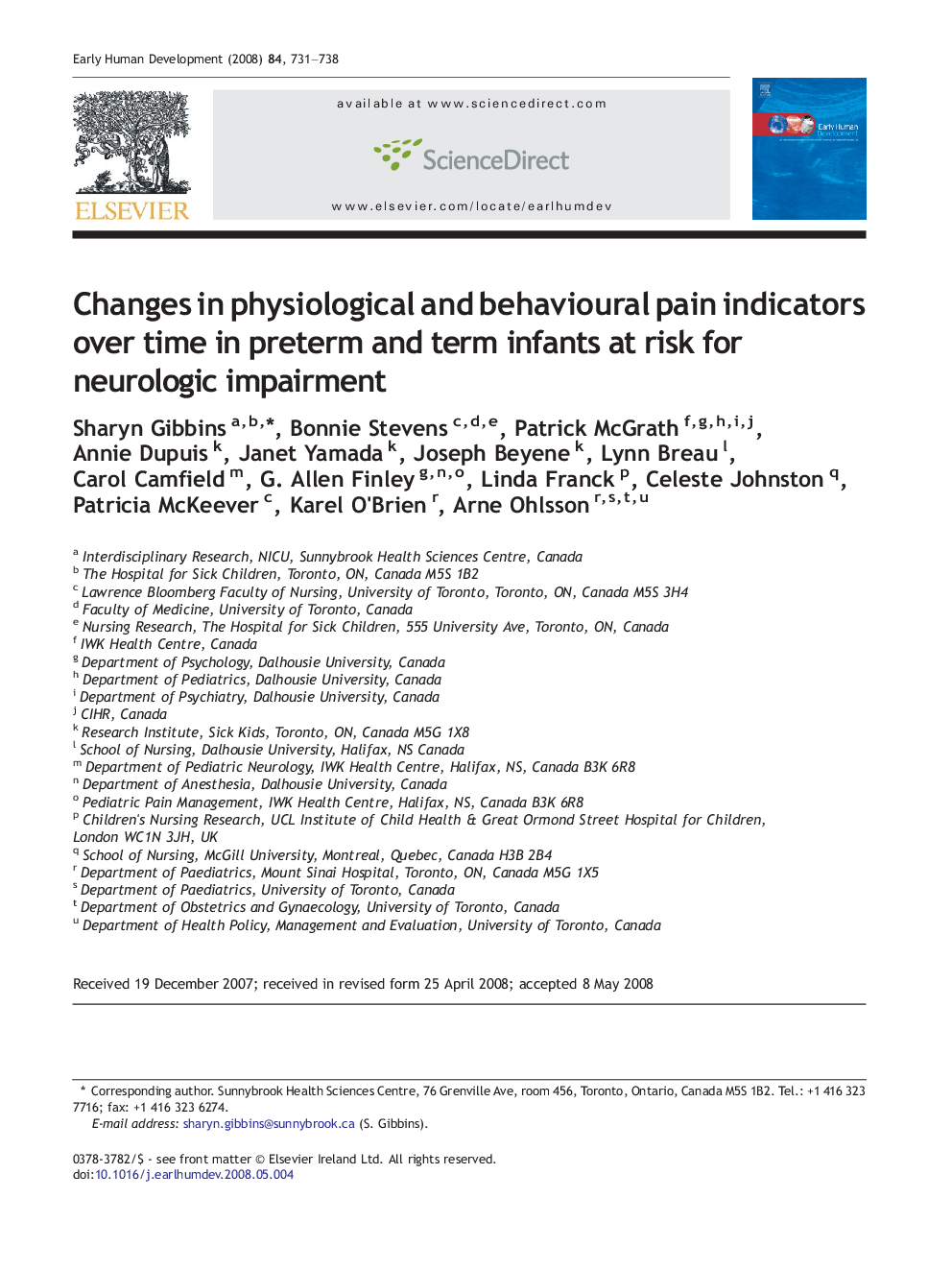| کد مقاله | کد نشریه | سال انتشار | مقاله انگلیسی | نسخه تمام متن |
|---|---|---|---|---|
| 3918569 | 1252264 | 2008 | 8 صفحه PDF | دانلود رایگان |

BackgroundApproximately 10% of infants admitted to a Neonatal Intensive Care Unit (NICU) are at risk for Neurological Impairment (NI). While we have limited knowledge on the influence of NI risk on pain responses, we have no knowledge of how these responses change over time.ObjectiveTo compare physiological and behavioural pain responses of infants at three levels of NI risk during the NICU neonatal period (Session 1) and at 6 months of age (Session 2).Design/methodsProspective observational design with 149 preterm and term infants at high (Cohort A, n = 54), moderate (Cohort B, n = 45) and mild (Cohort C, n = 50) risks for NI from 3 Canadian tertiary level NICUs. Infants were observed in the NICU during 3 standardized phases of a heel lance: baseline, stick and return-to-baseline. At 6 months, infants were observed during the same three phases during an intramuscular immunization injection. Physiological (heart rate, oxygen saturation) and behavioural (9 facial actions, cry) responses were continuously recorded.ResultsA significant interaction of Phase by Session was found with less total facial activity observed during Session 2 (all p values < 0.04). A significant interaction for Session by Cohort was found, showing that infants in Cohort A had significantly more change from baseline-to-stick phase for brow bulge, eye squeeze, nasolabial furrow and open lips between sessions with less facial actions demonstrated at Session 2 (all p < 0.02). There were significantly lower mean and minimum heart rate (all p < 0.02) and higher minimum and maximum oxygen saturation (p < 0.04) at Session 2. Significantly higher mean and minimum fundamental cry frequencies (pitch) in Cohort B (p < 0.04) were found in Session 1. Cohort A had significantly longer cry durations, but no significant differences in cry dysphonation.ConclusionsBehavioural and physiological infant pain responses were generally diminished at 6 months of age compared to those in the neonatal period with some differences between NI risk groups in cry responses. Future exploration into the explanation for these differences between sessions and cohorts is warranted.
Journal: Early Human Development - Volume 84, Issue 11, November 2008, Pages 731–738